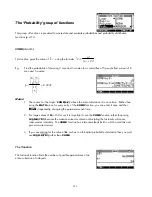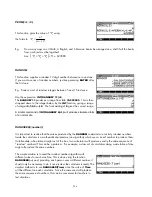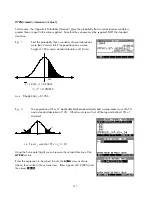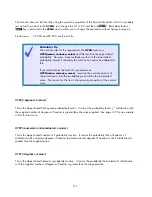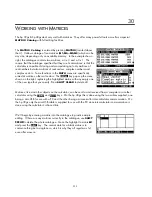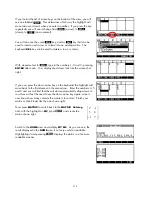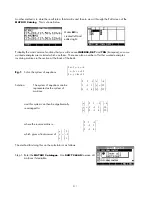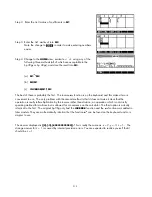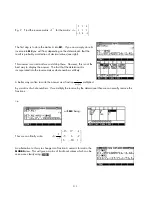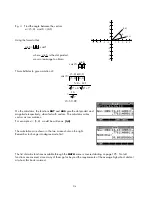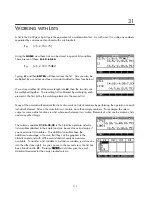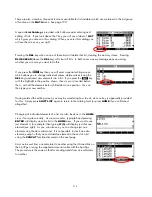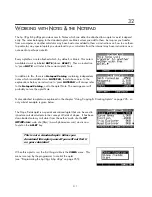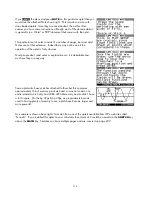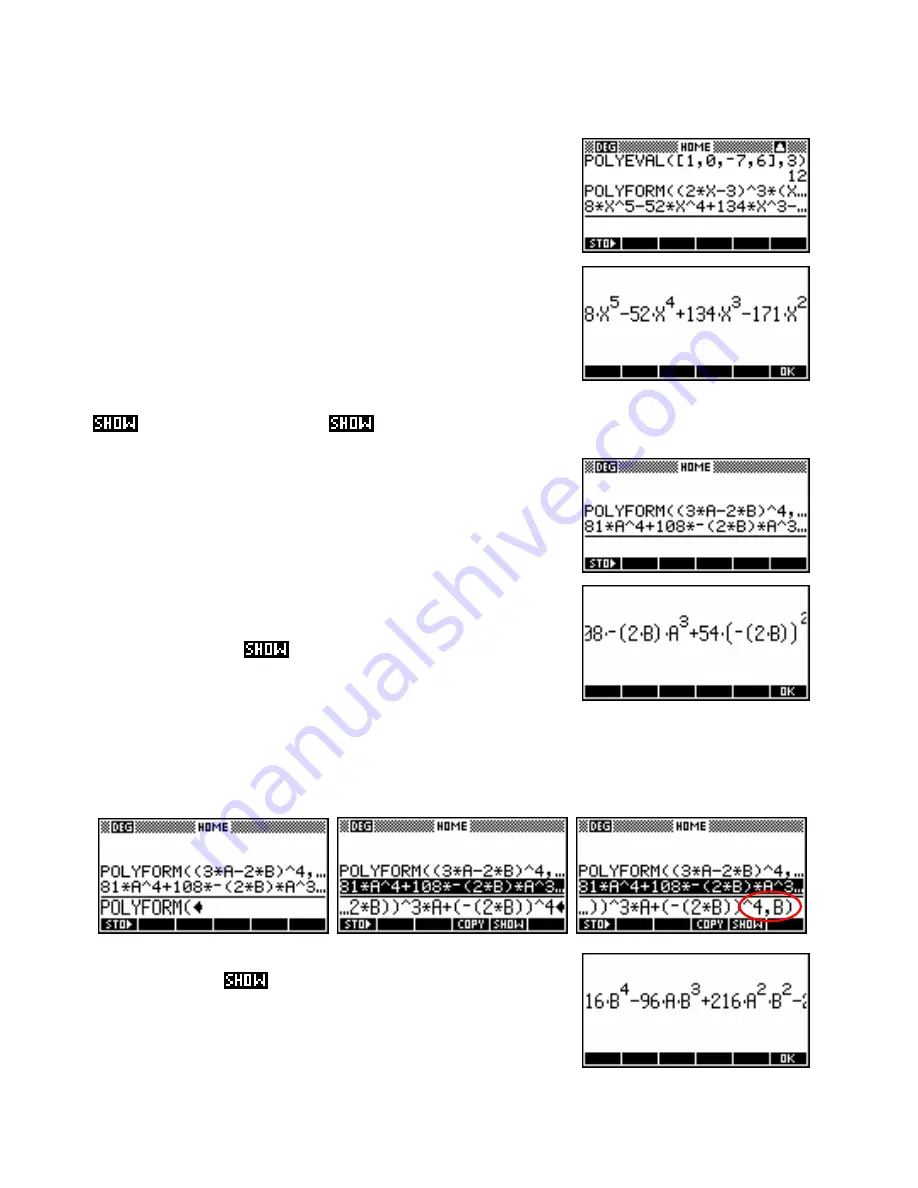
POLYFORM(<expression>,<var_name>)
This is a very powerful and useful polynomial function. It allows
algebraic manipulation and expansion of an expression into a
polynomial. The expected parameters for the function are firstly the
expression to be expanded, and secondly the variable which is to be the
subject of the resulting polynomial. If the expression contains more than
one variable then any others are treated as constants.
3
2
Eg. 1 Expand
(
2
x
−
3
) (
x
−
1
)
4
2
Result:
8
x
5
−
52
x
+
134
x
3
−
171
x
+
108
x
−
27
The resulting polynomial is shown both as it appears in the
HOME
view and as it appears after pressing the
key. Once it appears in the
window, of course, it can be scrolled right and left to see the
missing terms.
4
Eg. 2 Expand
(
3
a
−
2
b
)
This function contains two variables,
A
and
B
, which must be expanded
separately.
The first expansion, treating
A
as the variable, is done using the
expression
POLYFORM((3A-2B)^4,A)
. As you can see if you examine
the view after pressing
, the expansion of the expression in terms
of
A
has been done, but the terms involving
B
are not fully evaluated.
The solution to this is to use
POLYFORM
again. Use the
MATH
menu to fetch the
POLYFORM
function to the
edit line, then move the cursor up to the partially evaluated expression that was the result of the previous
POLYFORM
. Copy it into the edit line and add a comma, a
B
and an end bracket. Pressing
ENTER
will
now evaluate the terms involving
B
.
After pressing
ENTER
the for the second evaluation, the result is shown
right (after pressing
).
203

















